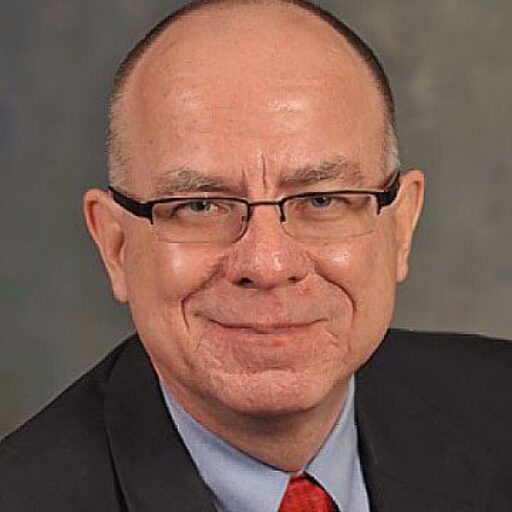 The primary distinctives that differentiate Christian Recovery from other approaches to life change lie in our approach to spirituality. Here are some of the major theological tenants of the Christian approach to recovery.
The primary distinctives that differentiate Christian Recovery from other approaches to life change lie in our approach to spirituality. Here are some of the major theological tenants of the Christian approach to recovery.
- Recovery is truly Christian only if God is part of it. This God is not just a nebulous “Higher Power”, but rather is the Creator of the Universe Who has revealed Himself in the Bible. Additionally, this God is a loving God, who showed His love by sending His Son, Jesus Christ, into this fallen world to save us. (John 3:16)
- The Word of God is the authoritative rule and guide for our recovery. We believe there is, indeed, some objective TRUTH in this world and that it is revealed in the Holy Scriptures. (Hebrews 4:12)
- There is a real devil. He is a real entity, who though the power of deception, is fighting for the minds of men. Truth is therefore the ultimate weapon in the spiritual warfare of Christian recovery. (John 8:31-32)
- Sin is deceptive, powerful and addictive. As Christian author, Keith Miller states, sin (or the “control disease”) is the root of all addictions and compulsive disorders. (Romans 7:15-25)
- There is a Redeemer. Jesus Christ has won the victory over sin, death, and the devil by His death on the cross. (1 John 3:8b) Therefore, the message of the Gospel brings forgiveness and the power to experience real change in our lives through God’s power. (Romans 1:16)
- This is a fallen world Not only are external things warped, perverse, confused, and corrupt, believers in recovery must still contend with their own fallen natures, as well. (Romans 7:21)
- All human beings need spiritual rebirth. Because spiritual death is a reality, we must assume that everyone needs to experience new life from God. (John 3:3)
- There is a significant difference between guilt and “toxic shame”. Guilt is a response of the conscience to specific sinful actions. On the other hand, destructive (or “toxic”) shame is an inner sense of being unlovable, unredeemable, hopeless, irreparably flawed, incomplete, and worthless. Everyone who struggles with a compulsive disorder experiences this to some degree. The Gospel provides the answer for both of these dilemmas. Confession and forgiveness are God’s way to overcome guilt. And, growing in relationship to Him and other healthy people enables us to accept ourselves as loved and lovable. (1 John 4:9)
- There is a definite difference between the terms “drunkard” and “alcoholic.” According to the Bible, drunkenness is a moral condition. On the other hand, alcoholism is a therapeutic condition. What separates the addict from the non-addict is not how often they drink or how much they drink, but what happens when they do drink – the loss of control (or powerlessness). Once an individual becomes addicted, he can never be a social drinker. (Ephesians 5:18)
- God works in processes. “Recovery” is not a one time, once-and- for-all thing – it is a process (Romans 12:2). Recovery is not just “fixing” ourselves, but rather it is gaining the “tools” to succeed in working out what God has already put within (sanctification). (Philippians 2:12,13)
- God works through His Spirit. The word Greek word “paraclete” is used in the scriptures to refer to the Holy Spirit. This term means “counselor” or “personal tutor.” To succeed in recovery, believers must learn to respond to God’s Spirit and walk in His will for their lives. (John 16:13-15)
- God works through people There is no more isolated and lonely person than the addict. John Bradshaw says, “The deepest wound of toxic shame is the inability to develop meaningful, intimate, human relations.” The message of Christian Recovery is that God’s grace is experienced as a process which involves intensely honest and nurturing relationships with other people. They serve as agents of His grace to unravel our woundedness and reshape our thinking. (Hebrews 10:23-25)
- Christian recovery is “intensive discipleship.” “Putting the cork in the bottle” (not using drugs or alcohol) is no guarantee of any lasting change in an individual’s life. What addicts need is a systematic commitment to an ongoing process of personal growth. Christian recovery means gaining new tools that enable us to live a new sober life and to remove all the “stumbling blocks” to a life of Christian victory. (2 Peter 1:5-11) We might also consider “recovery” as another word for what that Bible refers to as “sanctification”.
- Repentance is more than simply confessing our sins to God. We all must own up to our own sin if we are to experience forgiveness. (1 John 1:9) Still an additional step is necessary — repentance. The Greek word for repentance is “metanouia” which implies a complete change of mind. New thinking comes from new attitudes that have been formed by new perspectives. (Acts 3:19)
- “Rigorous honesty” is essential for true spirituality. Jesus declares that the truth will set us free (John 8:32) So, we must make a commitment to “walk in the light”. (1 John 1:5-9)
- There is a “therapeutic value” to talk. Self-revelation in a safe environment is a tremendously healing experience. Support groups provide an environment that promotes this process. (James 5:16)
- “Grace flows freely through unclogged conduits.” Christian workers cannot bring people to a place they have not come to themselves. Therefore, if we want to reach out to hurting people, we must be in the process of dealing with our own issues first. (1 Cor. 11:31; 2 Cor. 4:1-2)
You may also want to hear the audio work entitled Spiritual Foundations for Recovery


 I have often been asked why the topic of “reconnecting” is such a common theme in my writings and addiction recovery training sessions. To that I can answer, there’s no more disconnected people anywhere that the homeless addict. By the time he finds himself on the streets, he has succeeded in burning every relational bridge behind him. This lack of social support will keep him locked in a downward spiral because no one recovers from addiction and homelessness by themselves. Real changes occur when such a person is able to reconnect, first, with God, then himself and, finally, with other safe people with home he can continue the journey toward wholeness.
I have often been asked why the topic of “reconnecting” is such a common theme in my writings and addiction recovery training sessions. To that I can answer, there’s no more disconnected people anywhere that the homeless addict. By the time he finds himself on the streets, he has succeeded in burning every relational bridge behind him. This lack of social support will keep him locked in a downward spiral because no one recovers from addiction and homelessness by themselves. Real changes occur when such a person is able to reconnect, first, with God, then himself and, finally, with other safe people with home he can continue the journey toward wholeness.

